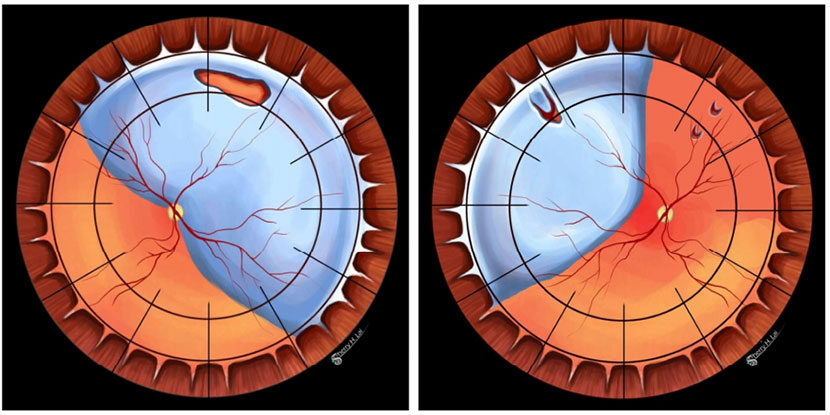Vision can be recovered from a detached retina using a treatment called pneumatic retinopexy. It frequently happens in an office setting, in contrast to other methods of treating a detached retina.
At the back of your eye is a layer of cells called the retina. These cells communicate visual information to your brain using light. When a portion of your retina separates from the eye’s inner wall, this is referred to as a retinal detachment. Your retina stops working normally when it occurs. A retinal detachment may result in permanent visual loss if it is not properly treated.
Your eye doctor will inject an expanding gas bubble into your eye if you have pneumatic retinopexy. Your stance will be such that the bubble passes over the detachment and presses it up against your eye’s back. The retina is then frozen against the eye’s wall by your ophthalmologist.
You are more prone to experience a retinal detachment if certain conditions exist. Nearsightedness, other eye conditions like uveitis, having had cataract surgery in the past, and getting older are some of them.
The retinal detachment typically occurs on its own, although occasionally it can also be brought on by an eye injury.
Retinal detachment will likely necessitate some form of operation. There may be more floaters in your eye. These seem as floaty cobwebs or tiny specks in your range of vision. They may be so many as to hamper your vision. Additionally, you can notice a veil across your field of vision or light flashes in your eyes.
If you experience these signs, you might require surgery to reattach your retina. By doing this, you can re-establish blood flow to your retina and regain vision.
Scleral buckling, vitrectomy, or a combination of the two procedures are occasionally used by eye specialists to treat retinal detachment. A less invasive procedure with a possible decreased risk of problems is pneumatic retinopexy. If you have a difficult tear or if it is located on the bottom portion of your eye, pneumatic retinopexy might not be the best option for you. Inquire with your eye doctor about the advantages and disadvantages of any form of treatment.
The pneumatic retinopexy usually goes smoothly, but occasionally difficulties do happen. Your age, your health issues, and the details of your retinal detachment may all affect your risks. Proliferative vitreoretinopathy (a scar-like condition on the retina that can result in holes or recurring detachment), persistent or recurrent retinal detachment, and trapped gas in your eye are some of the most frequent side effects of the operation.
Fresh retinal tearing is one of the less common risks, along with folds in the retina, eye inflammation, an increase in eye pressure, eye haemorrhage, detachment of the choroid layer beneath the retina are other less common risks.
There is also a risk that the retina will detach again and that you will need a repeat procedure.
At The Eye Center- Dr. Mahnaz Naveed Shah & Associates our team of eight ophthalmology subspecialists/ eye specialists, eye surgeons who are considered amongst the very best eye specialists in Karachi and in Pakistan, have the diagnostic and treatment capabilities to treat from the simplest to the most complex patients. We work hard to provide our patients with the best possible medical and surgical eye care, in a state of the art purpose built eye care facility. We offer the entire array of medical, laser and surgical treatments to help provide patients the best possible care in the most efficient, safe and ethical manner.
If you need an appointment, please contact us at 03041119544 during our working hours or leave us a WhatsApp message at +923028291799 and someone will connect with you. Walk-in appointments are also available for emergencies. We can also be reached through our web portal on www.surgicaleyecenter.org

